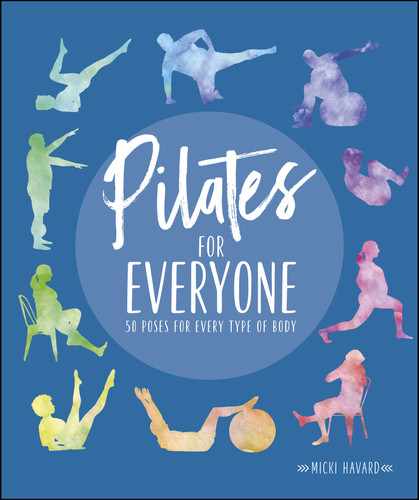WHAT ARE THE BENEFITS?
Practicing Pilates can improve your core strength (balance), flexibility, spinal and joint mobility (posture and stability), body awareness, and overall physical strength. Let’s look at these areas to discover how they can help you reach your fitness goals.
Core strength (balance)
Perhaps the biggest advantage of making Pilates a part of your wellness regimen is it can help strengthen your core. Your core is the center of your body, including all the muscles in your midsection (front, back, and sides), and this area can greatly benefit from a regular Pilates routine. Almost every movement you make relies on your core muscles, and when you can develop and enhance these muscles, movements can feel easier. Plus, with a strong core, you’ll increase your balance, further making physical activities easier and more efficient.
Flexibility
Flexibility is the most neglected component of fitness and adding a Pilates practice to your wellness plan is a wonderful way to gain more flexibility. Rather than using static stretches, Pilates focuses on movements while stretching. This means the muscles are warm as you stretch, allowing you to stretch further with less pain and injury. Improving and strengthening your flexibility can also mean better posture and balance, better mobility, and, yes, even a better state of mind—which is a strong aspect of every Pilates exercise.
Spinal & joint mobility (posture & stability)
Pilates encourages students to target the muscles that protect and support their spine. Because Pilates involves stretches and exercises that work to strengthen all the essential parts of your core, when you perform exercises that target your core muscles, you’re also going to strengthen your back and gain spinal stability and mobility. This means less back pain, especially in your lower back, which would typically prevent you from fully enjoying all kinds of activities, but with help from Pilates, you’ll gain more control over your ability to perform everyday movements.
Pilates can also improve your joint mobility and range of motion by moving your joints through their full range of motion from a stable base. During a balanced Pilates class, you work through all planes of motion and allow the body’s joints to mobilize through their natural movement and natural function. The repetitive joint movements in Pilates help stimulate and promote the release of synovial fluid into the joint cavities, which helps protect joints and allows for smooth movement. Because Pilates is a low-impact and low-intensity type of workout, the movements are easy on the joints.
Body awareness
Pilates can help you connect with your body to learn how to best move and function. This isn’t about limitations as much as it’s about finding ways to do what you need and want to do. Performing the exercises in this book—whether the main exercises or the modifications (or a combination depending on what feels right to you)—will help you see where you are physically and mentally. Making your practice a regular routine will allow you to take this even further by developing and achieving your exercise goals while continuing to discover your capabilities and full potential.
Overall physical strength
Pilates is also a form of strength training. You can perform Pilates on a mat using your body’s weight and/or small props or on Pilates equipment that uses spring tension for weight resistance. Practitioners also perform movements that improve their overall strength, working large muscles and often neglected smaller muscles. By practicing the sequences at the back of this book—combining Pilates exercises into routines—you can assure yourself that you’ll target many different areas of your body, ensuring you’re working on strengthening your body from head to toe.

